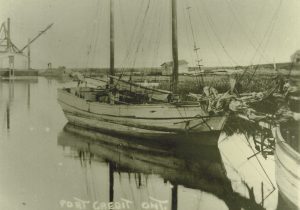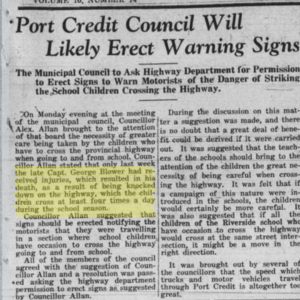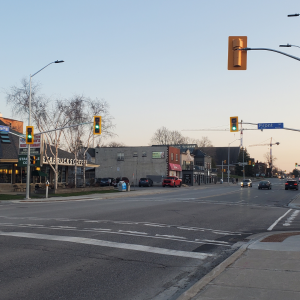 Well, the tale is both tragic and heartening. Though stone hooking had once been a major industry in Port Credit, by the 1920s and 1930s, the trade had declined. Only one stone hooking schooner remained afloat: the Lillian commanded by her aging Captain George Blower.
Well, the tale is both tragic and heartening. Though stone hooking had once been a major industry in Port Credit, by the 1920s and 1930s, the trade had declined. Only one stone hooking schooner remained afloat: the Lillian commanded by her aging Captain George Blower.
On March 12th, 1928, Capt. George Blower (aged 62) was fatally struck by a motorist whilst trying to cross the Toronto-Hamilton Highway, now Lakeshore Road, near Clarke Memorial Hall. His death, though an accident, was a blow to the community who knew him well. The same day the Port Credit News reported his death, they also ran another story.
Then Port Credit Councilor Allan noted that, “only last week the late Capt. Blower had received injuries, which resulted in his death, as a result of being knocked down on the highway, which the children cross at least four times a day during the school season”. As such, Port Credit Council had made a motion to lower the speed limit and implement warning signs. They also proposed implementing an educational campaign to teach the children of Riverside Public School about road safety.
children cross at least four times a day during the school season”. As such, Port Credit Council had made a motion to lower the speed limit and implement warning signs. They also proposed implementing an educational campaign to teach the children of Riverside Public School about road safety.
In June of 1928, yet another pedestrian was struck and killed, prompting the council to pass a resolution to be sent to the chief engineer of the Ontario Highway Department demanding stricter speed limits, the fixing of potholes, and safety signs to be posted- effective immediately. Today, the speed limits are 40 km/h in the Front Street and  Lakeshore area, far lower than in the past. School children for many years generally chose to cross at John Street to avoid Front Street, which up until very recently did not have traffic lights.
Lakeshore area, far lower than in the past. School children for many years generally chose to cross at John Street to avoid Front Street, which up until very recently did not have traffic lights.
The implementation of safety measures in recent years has been decades in the making, a dream which oddly enough was (partly) inspired by George Blower nearly 100 years ago. Though Capt. George Blower is best known for his life on the Lake, it is apparent that his death was but one factor in helping to improve road safety on dry land for years to come.



Comments are closed.